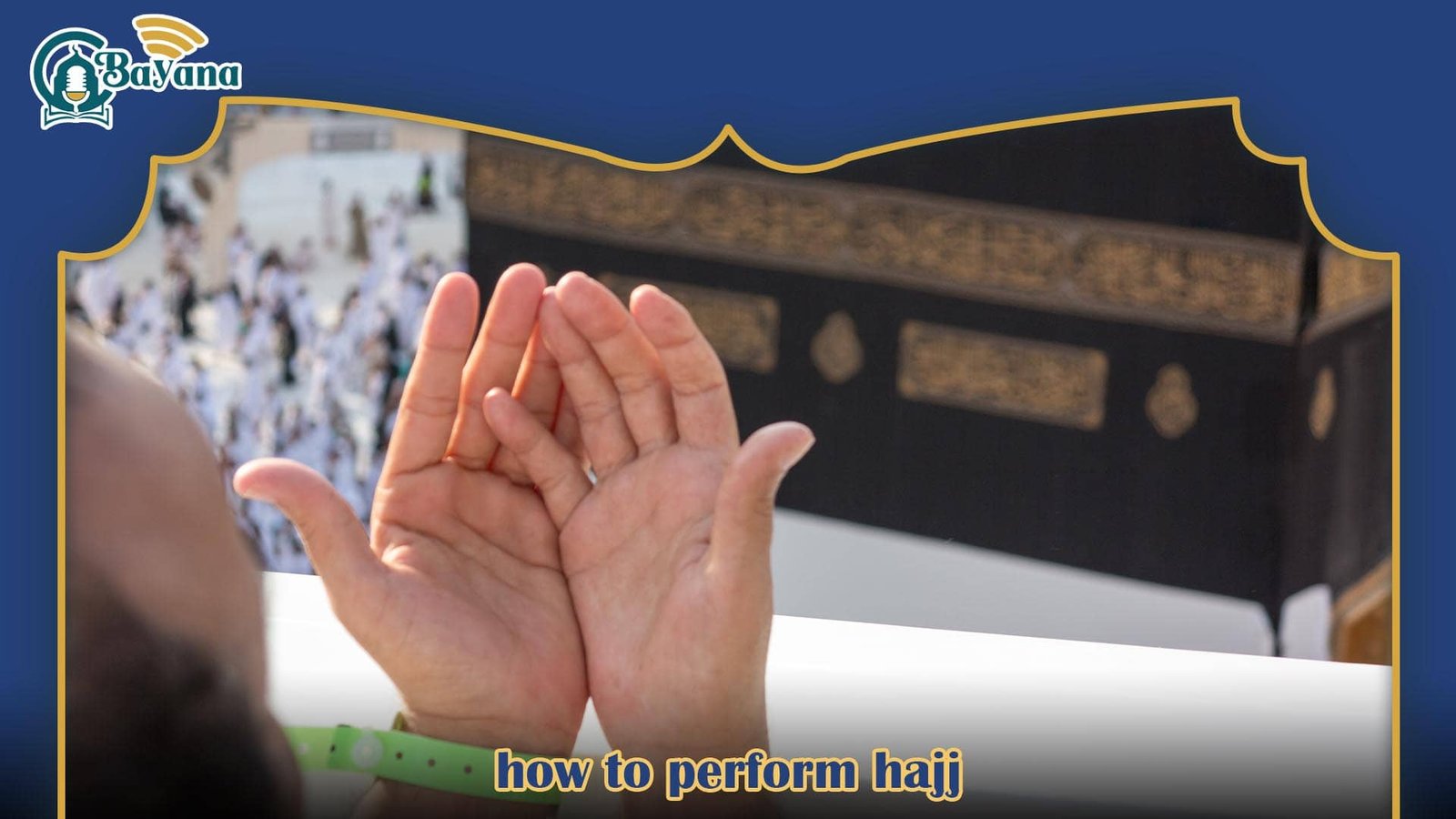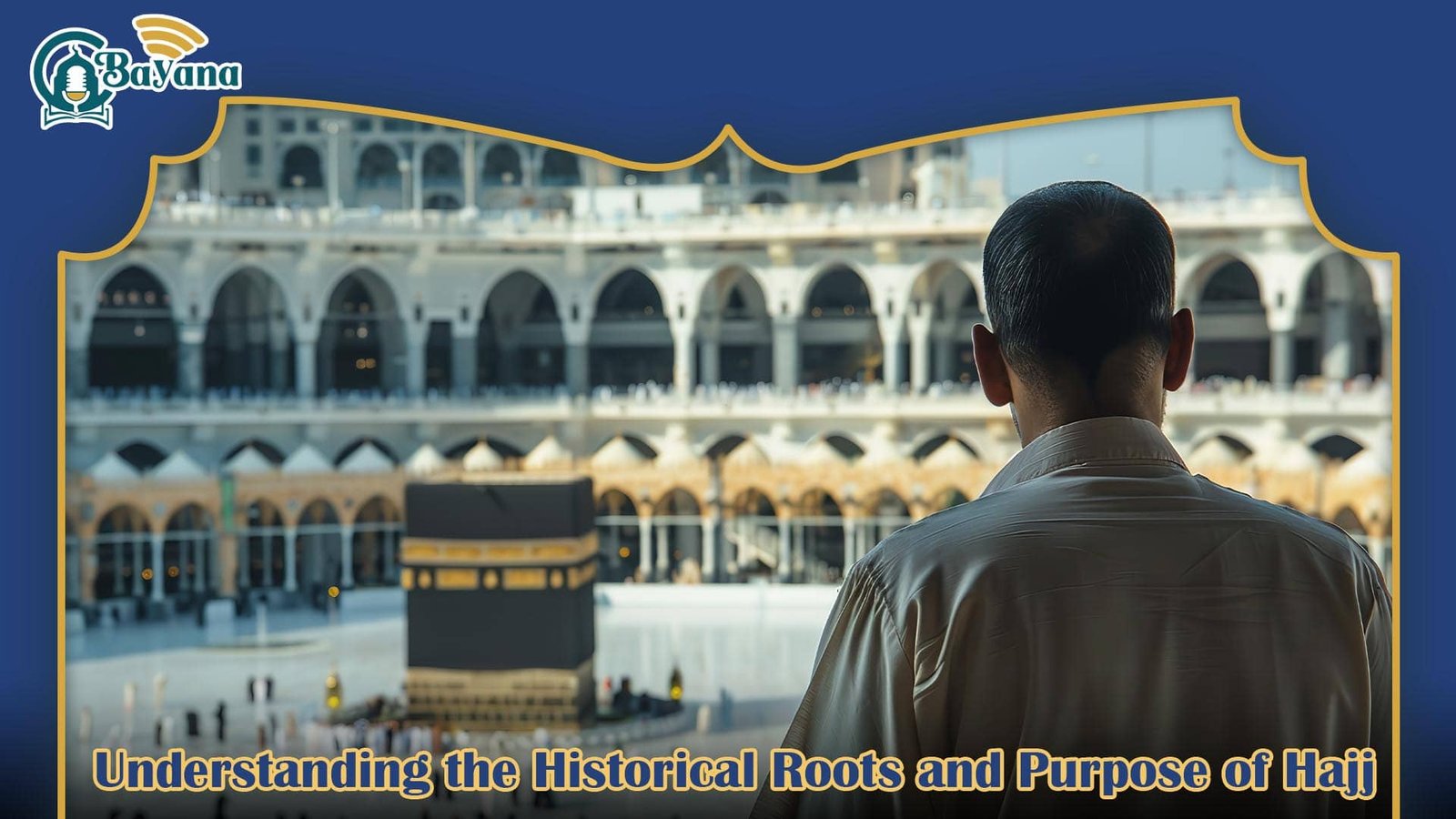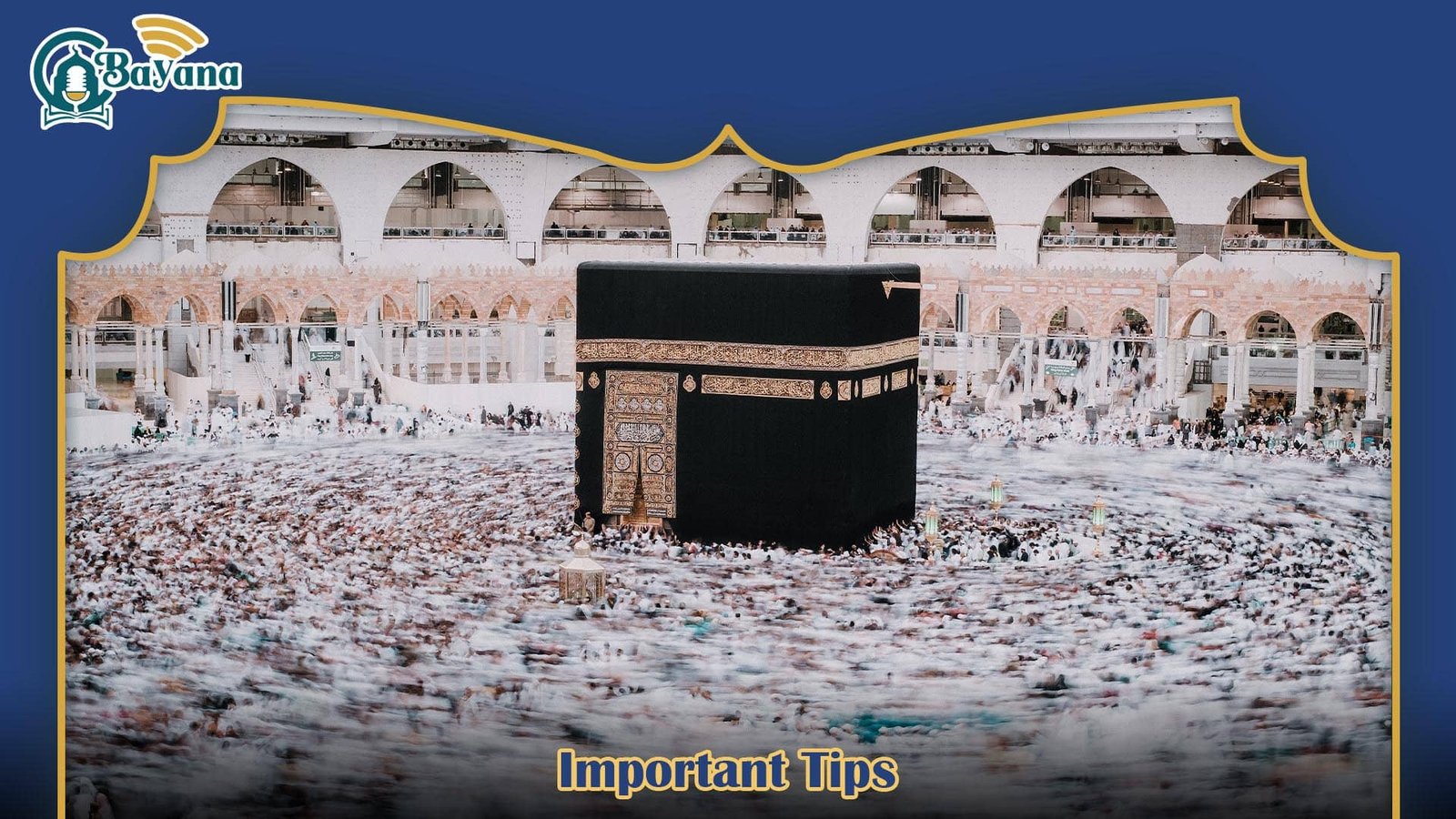Start your free trail Now

how to perform hajj
Many Muslims around the world seek to learn how to perform Hajj as it is a vital religious duty and one of the Five Pillars of Islam. This sacred pilgrimage to Mecca is performed once in a lifetime by those who are physically and financially able.
It involves a series of rituals carried out over several days, each with deep spiritual meaning. In this introduction, we will outline the key steps involved in performing Hajj and the importance of each act in the journey of faith.
Understanding the Historical Roots and Purpose of Hajj

The origin of how to perform Hajj traces back to events that occurred thousands of years ago. Although the rituals were confirmed and practiced by the Prophet of Islam in the 7th century, their foundations lie in much older traditions passed down through generations.
The pilgrimage, as it is known today, was first observed in its complete form during the 600s CE. However, aspects of the pilgrimage were already known and practiced in the region even before that time. In the pre-Islamic era, the month during which Hajj takes place was regarded as sacred, and conflict was generally avoided during this period.
People from across the Arabian Peninsula would travel to a central site, now recognized globally by Muslims, to carry out acts of devotion. This location, featuring a cube-shaped structure, held significant cultural and spiritual meaning. While it was once misused for various non-monotheistic practices, it later became a symbol of unity and devotion in the context of monotheism.
Historical accounts suggest that the original structure was built thousands of years earlier as part of a broader divine mission. Over time, it came to play a central role in the rituals of Hajj, not as an object of worship, but as a place around which specific acts are performed during the pilgrimage.
The journey and its rituals serve as a reminder of deep spiritual values and the importance of commitment, sacrifice, and reflection, which remain at the heart of how to perform Hajj today.
An Overview of the Significance and Practice of Hajj
How to perform Hajj is a question many Muslims reflect on as they prepare to fulfill this essential part of their faith. Hajj is a spiritual journey that holds deep meaning and represents one of the fundamental acts of devotion in Islam.
This pilgrimage occurs annually during a specific period in the Islamic lunar calendar, taking place in a region that has long held religious importance. Participation in Hajj is expected from those who are capable—physically, emotionally, and financially. While one complete pilgrimage is sufficient in a lifetime, choosing to go more than once is encouraged for those who are able.
Preparing for this journey often comes with feelings of anticipation and reflection. It is not only a major physical undertaking, but also a profound spiritual experience. For many, it is a once-in-a-lifetime event that offers the chance to renew personal faith and seek inner transformation.
The pilgrimage involves various rituals and practices that test patience, discipline, and sincerity. It is designed to help individuals disconnect from worldly distractions and focus entirely on spiritual growth, self-purification, and deeper connection with the values at the core of Islamic belief.
Because the Islamic calendar is based on lunar months, the specific dates of Hajj vary each year in the Gregorian calendar. The journey spans several days, during which pilgrims follow a sequence of prescribed acts in a shared experience of devotion and humility.
Understanding the meaning behind each stage of the pilgrimage is essential for anyone seeking to know how to perform Hajj with mindfulness and intention.
The Early Foundation of the Pilgrimage Site
The origins of the sacred site associated with how to perform Hajj go back to ancient times, where a simple structure was established near a well-known source of water. This construction was carried out as an act of devotion, symbolizing unity and belief in one divine power.
A father and son worked together to raise a modest stone building intended as a central location for spiritual gatherings. The purpose of this structure was to create a place of worship for all those who followed a path of faith and monotheism. Over time, this site became deeply connected to the rituals now practiced during the pilgrimage.
The Origins of Key Lessons Behind the Pilgrimage
The story behind how to perform Hajj is deeply connected to early trials of faith and perseverance. A devoted figure, known for his strong belief in one God, faced several significant challenges that became important lessons for generations to come. These challenges highlighted themes such as trust, sacrifice, and dedication.
One of the most profound tests involved a decision to leave his family in a remote, harsh desert environment with limited resources. As hardship struck, a determined woman searched tirelessly for help, running between two nearby hills in the hope of finding assistance. This act of perseverance was met with a miraculous discovery—a spring of fresh water suddenly emerging from the arid ground.
This water source became vital not only for survival but also for trade and growth in the area. The site flourished over time, symbolizing the rewards of faith and resilience. These events laid the foundation for the spiritual and physical journey that forms the core of the pilgrimage tradition.
Understanding these origins is key to appreciating how to perform Hajj as more than just a set of rituals, but as a meaningful expression of faith, patience, and reliance on a higher power.
The Origins and Revival of the Pilgrimage Tradition
Over time, the location of a significant water source and a sacred structure became the foundation for a flourishing settlement. The early practice of visiting this site as an act of devotion was carried on through generations, establishing the roots of what is now known as the pilgrimage.
This tradition was originally a way to honor lessons of faith, sacrifice, and belief in one God. However, as centuries passed, the area shifted away from its original spiritual meaning and became a center for different religious practices and commerce.
Many years later, a spiritual leader emerged who aimed to restore the site’s true purpose. With renewed guidance, the pilgrimage was revived and reestablished as a vital religious obligation. This marked the formal beginning of the modern pilgrimage, reconnecting with the original values and intentions behind the journey.
Today, understanding how to perform Hajj involves recognizing this rich history, the revival of faith, and the enduring significance of the pilgrimage in spiritual life.
Who Qualifies to Undertake the Pilgrimage?
The pilgrimage is a fundamental religious duty that every adult follower of the faith is expected to fulfill at least once in their life. However, certain conditions determine who is required and able to make this journey.
Firstly, the obligation applies only to mature individuals, whether male or female. While younger people may accompany or visit the site, they are not required to perform the pilgrimage themselves.
Secondly, those who face serious health challenges, advanced age, or physical limitations are excused from this responsibility to ensure their well-being.
Thirdly, financial capability is a key factor. A person should be free from debt or have their debts managed responsibly before undertaking the pilgrimage. In some cases, if the lender agrees, and the person can balance the pilgrimage without jeopardizing their financial commitments, the journey may still be possible.
Understanding these eligibility criteria is essential when learning how to perform Hajj, as it ensures that the pilgrimage is approached with sincere intention and readiness.
The Modern Pilgrimage Experience and Its Spiritual Significance
Each year, millions of people from diverse backgrounds come together during a specific time in the calendar to participate in the pilgrimage. This gathering symbolizes equality, unity, and shared devotion, as everyone performs the same rituals regardless of their origins or social status.
For many, reaching this moment is the result of years of saving and preparation, while others may have the opportunity to undertake the journey multiple times. Even for those who have yet to experience it firsthand, the period in which the pilgrimage occurs is regarded as a time full of spiritual blessings.
During this special time, individuals can earn significant spiritual rewards by engaging in acts of devotion and reflection, even if they are not able to make the physical journey. Understanding how to perform Hajj also means appreciating the broader spiritual opportunities this period offers.
When and How the Pilgrimage is Performed
The timing of the pilgrimage is based on a lunar calendar, which means its dates shift each year when compared to the widely used solar calendar. Specifically, the pilgrimage takes place during a few key days in the last month of this lunar year.
Pilgrims begin their journey days or even weeks before these dates, traveling from various parts of the world by different means such as air, land, or sea. For example, travelers coming from distant countries often arrive by plane to nearby cities before continuing onward to the sacred site.
Understanding how to perform Hajj includes knowing when to make the journey and how to organize travel to participate in the rituals at the designated time.
A Simplified Step-by-Step Guide on How to Perform Hajj
Every year, thousands of pilgrims from many countries travel to a sacred city to come together and fulfill one of the most important pillars of their faith. If you’re preparing for this profound journey, this step-by-step guide will help you navigate the key stages involved in how to perform Hajj with clarity and confidence.
Here is an overview of the essential steps to follow during the pilgrimage:
1-Preparing mentally and spiritually, and making the sincere intention
2-Entering the state of sacred ritual readiness
3-Performing the initial circumambulation around the holy structure multiple times
4-Walking between two significant hills
4-Completing the ritual of hair trimming or shaving to mark a stage’s end
5-Resting and engaging in prayer
6-Re-entering the sacred state for the next phase
7-Traveling to a designated gathering place
8-Spending the day in deep reflection and devotion
9-Collecting essentials for the night under the open sky
10-Symbolically rejecting negative influences
11-Offering a sacrificial act
12-Shaving or trimming hair once more
13-Performing another circumambulation
14-Walking between the hills again
15-Repeating the symbolic stoning ritual
16-Staying overnight at a special campsite
17-Continuing the symbolic stoning
18-Performing the farewell circumambulation to conclude the pilgrimage
By following these steps, pilgrims engage in a journey that challenges the body, uplifts the spirit, and strengthens faith. This guide provides a clear path on how to perform Hajj with mindfulness and devotion.
Quick Guide to Performing Hajj (Tamattu’)
Intention & Preparation
Make a sincere intention (niyyah) for Hajj before arriving in Mecca. Prepare yourself spiritually and physically.
1-Ihram for Umrah
2-Men wear two white unstitched cloths (Ihram).
3-Women cover modestly without face covering.
4-Avoid prohibited acts like cutting hair, using perfume, or marital relations.
5-Tawaf (Circumambulation)
Walk 7 circuits around the Kaaba, starting and ending at the Black Stone.
6-Sa’i (Walking between Safa and Marwah)
Walk back and forth 7 times between the hills of Safa and Marwah.
7-Shaving or Trimming Hair
Men shave or trim hair; women trim a small portion.
8-Rest in Mecca
Rest, pray, and prepare for the 8th of Dhu al-Hijjah.
9-Ihram for Hajj (8th Dhu al-Hijjah)
Enter Ihram again, this time with the intention for Hajj.
10-Travel to Mina
Stay in Mina, pray, and prepare for the next day.
11-Day of Arafah (9th Dhu al-Hijjah)
Spend the day at Arafah praying and supplicating. This is the main pillar of Hajj.
12-Muzdalifah after sunset
Pray Maghrib and Isha together, collect stones for Jamarat, and rest.
13-Ramy al-Jamarat and Sacrifice (10th Dhu al-Hijjah)
14-Throw 7 stones at the largest Jamrah (stone pillar).
15-Offer the sacrifice (Qurbani).
16-Celebrate Eid al-Adha.
17-Shaving or Trimming Hair Again
Exit Ihram by shaving or trimming hair.
18-Tawaf al-Ifadah and Sa’i
Perform Tawaf al-Ifadah (mandatory) and Sa’i again.
19-Ramy al-Jamarat on 11th & 12th Dhu al-Hijjah
20-Throw 7 stones at each Jamrah for two days.
21-On the 13th (optional), throw 21 stones.
22-Stay in Mina
Continue praying and worshipping in Mina.
23-Farewell Tawaf
Before leaving Mecca, perform the Tawaf al-Wada (farewell circumambulation) and pray two Rak’ahs near the Kaaba.
Important Tips

1-Wear comfortable sandals tested before your journey.
2-Avoid scented products during Ihram.
3-Drink Zamzam water regularly.
4-Be patient during crowded rituals.
5-Maintain good manners and avoid arguments.
6-Carry sunscreen, unscented moisturizer, and lip balm.
In conclusion Performing Hajj is a profound journey of faith, devotion, and self-purification. Knowing how to perform Hajj correctly—from entering Ihram, completing Tawaf and Sa’i, standing at Arafah, to performing the rituals at Mina—allows every pilgrim to fulfill this sacred obligation with confidence and sincerity. May your steps be guided, your prayers accepted, and your heart transformed by this once-in-a-lifetime spiritual experience. Remember, Hajj is not just a ritual, but a lifelong commitment to faith and submission to Allah.



